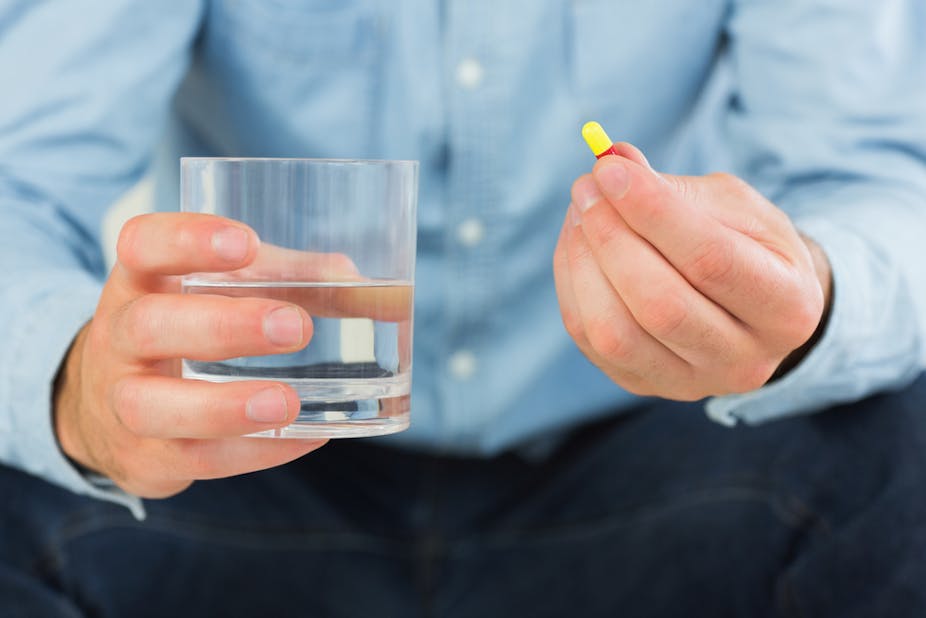Generic drugs are copies of brand-name drugs whose patent has expired, allowing consumers (and governments) to buy a replica drug at a fraction of the price. But a recent US investigation has found consumers may not be getting what they bargained for in some generic imports from India.
India’s pharmaceutical industry supplies 40% of generic prescription drugs consumed in the US and a substantial number of drugs to Australia. Those drugs include painkillers, antibiotics, heart and psychiatric medications. Potential quality problems are thus of real concern to Australian clinicians, consumers and policymakers.
It’s not so long ago that the Therapeutic Goods Administration (TGA), Australia’s national drugs and medical devices regulator, was criticised for its response to problems with breast implants and joint implants. Worryingly, there’s little sign that the TGA is heeding warnings over problems with imported generic pharmaceuticals.
Last month the US Food and Drug Administration (FDA) – the US counterpart of the TGA – announced it was “blitzing Indian drug plants”, financing those inspections with the US$300 million in annual fees from generic drug makers.
This follows a high-profile case last year where Ranbaxy, one of India’s biggest drug manufacturers, pleaded guilty and paid a US$500 million penalty for distribution of adulterated medicines between 2004 and 2007.
The FDA reports refer to plants with “flies too numerous to count”, fudged test results, defective storage for sensitive equipment and samples in pools of water from melting ice. One drug company executive pleaded with the FDA to allow his products into the US so that he could more easily pay for fixes.
Some drug manufacturing in India and other emerging economies is global best practice. Other production is both shoddy and dangerous. The WHO, for example, estimates that one in five drugs in the Indian market are fakes. Figures in African markets are even more frightening.
India’s top drug regulator is reported as lamenting that:
If I have to follow US standards in inspecting facilities supplying to the Indian market we will have to shut almost all of those.
This comment also embodies a regulator’s failure to recognise the costs to Indian consumers from inadequate regulation, manufacture and distribution.
The FDA is now rolling out bans on imports from Ranbaxy and other overseas manufacturers, including “adulterated” generic versions of leading antibiotics and painkillers.
Back in Australia, we have been patiently waiting for the TGA to acknowledge the FDA investigations and increase its scrutiny of drug imports. But there is still no sign of action. No media release. No reassurance. No recognition that there might be concerns that can be readily allayed.
Drug testing is an expensive process; it isn’t done instantly. But while we cannot expect the TGA to test every batch or to have an inspector in every domestic and overseas plant, the FDA bans suggest that there is need for care. Silence on the part of the TGA is therefore disturbing.
Protecting patents
The US FDA bans on some Indian-made generics have been criticised as a ploy to reinforce the position of US drug businesses in global trade wars. Indian politicians have argued that the US is protecting its domestic industry from cheaper imports, some of which come from plants in Eastern Europe and Nigeria.
There is disagreement about policy drivers. In this case, US government action reflects genuine public health concerns. It also reflects the global trade wars, with the US attempting to reinforce its pharmaceutical companies by extending patents on popular drugs and reducing the availability of generics.
The FDA bans coincide with refusal by the Australian government to release the report of the independent Pharmaceutical Patents Review, which it received last year. The report apparently recommended changes to Australian law that would shift the balance towards consumers and taxpayers and away from drug companies, which are typically overseas-owned.
Pharma patents matter for innovation – they allow companies to recoup the high costs involved in developing new drugs. They also matter to consumers because as an Australian you pay for protection twice: once when you buy your pharmaceuticals and again when you pay the taxes that go to subsidise prescription drugs under the Pharmaceutical Benefits Scheme (PBS).
According to the industry minister, the report is not going to be released. One reason might be triumphalism: he can disavow an ALP initiative that disconcerted Big Pharma and raised inconvenient questions about the secret Trans Pacific Partnership Agreement, which appears to be very strongly biased towards US commercial interests.
Another reason is that release would foster informed discussion about the shape of the Australian drugs regime. We’re spending a lot of money but are we getting quality?
Rather than encouraging rent-seeking by drug companies, should we be putting more money into the TGA? That agency is staffed by some bright, conscientious people. It has also been damned in a succession of independent reports for inept management and lack of responsiveness. The cost to the Australian economy of its regulatory incapacity is significantly greater than the TGA’s budget, by at least ten times.
We therefore need to see that it’s actively engaging with questions of pharmaceutical quality control and that there is informed discussion, not a rush to the courts when things go wrong.

